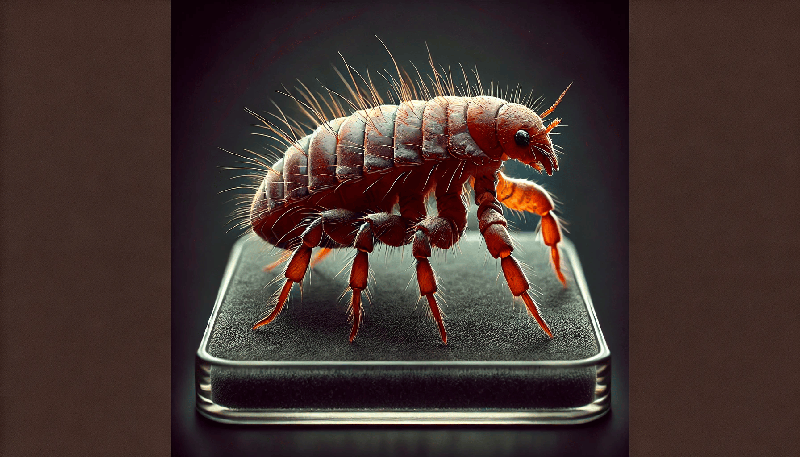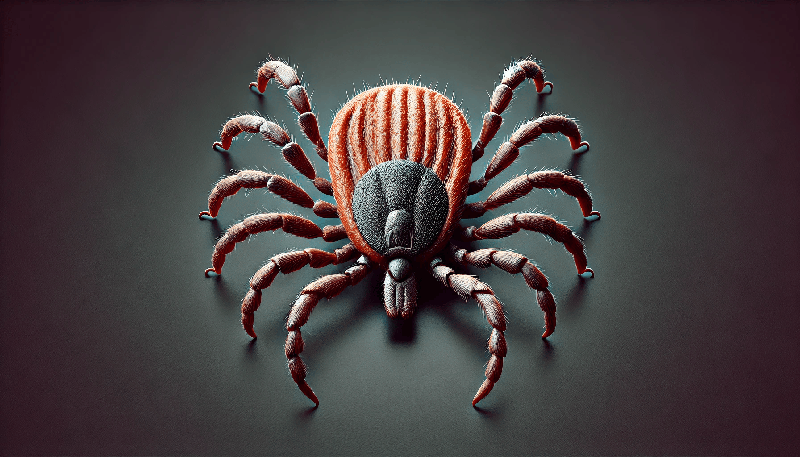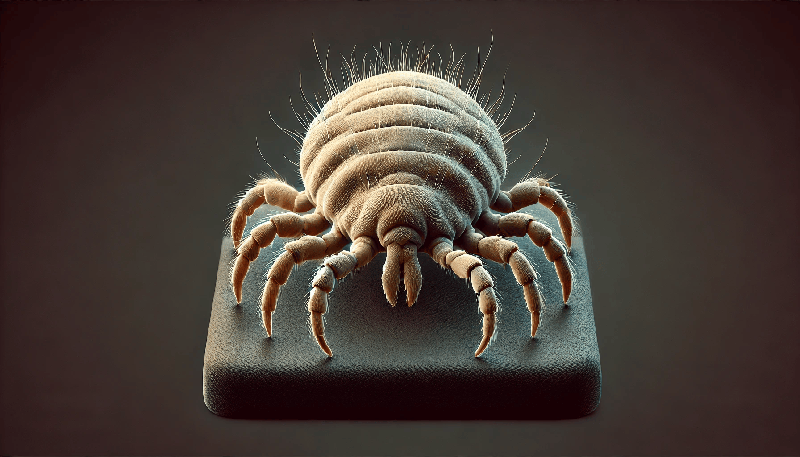全能狗S系列

全能狗S為全能狗升級版,屬於犬隻跳蚤和蜱蟲驅蟲劑/預防藥物。 含有一種新的活性成分(米爾倍黴素肟),可以預防狗狗心絲蟲和其他腸道寄生蟲。
每月服用全能狗S能有效控制跳蚤和蟎蟲,能抑制心絲蟲生長,對線蟲、蛔蟲、鉤蟲和鞭蟲等寄生蟲極具預防功效。
此款藥物功效強大,在獸醫診所購入價格高昂,而具體價格取決於犬隻大小。
現在,您無需再花費如此高昂的價格就能輕鬆購入。PetBucket係一寵物藥品網站,讓您以最優惠的價格毫無負擔取得全能狗S。
預防寄生蟲
跳蚤
蜱蟲
心絲蟲
腸胃道蠕蟲
蟎蟲
寄生蟲
很不幸的是,在每隻狗狗生命中的某個階段幾乎都會面臨寄生蟲的問題。寄生蟲基本上是任何以宿主為生以宿主為食的有機體。 他們會存在於內部或外部,有很多種形式但有一個共通點,都會造成寵物的不適與健康問題。
跳蚤
學名: Ctenocephalides spp.
跳蚤是犬隻身上最常見的寄生蟲之一。 它們的叮咬不僅會造成寵物的不適,還會導致許多疾病和狀況,包括:
- 跳蚤過敏性皮炎
- 絛蟲
- 巴爾通體/貓抓病
- 貧血
分佈和棲息地: 跳蚤遍布歐洲、美洲和澳大利亞。 家中的地毯、寢具用品(尤其是狗狗的床鋪跟狗窩)或是窗簾上都會有他們的蹤跡。 在戶外,他們更喜歡陰涼、溫暖和潮濕的地方。
跳蚤生命週期

跳蚤感染症狀
要如何判斷狗狗有沒有受到跳蚤的侵擾?當狗狗開始不停抓癢或是感覺到他的身體不適時,這些跡象都有可能是受到跳蚤感染,還有其他明確的跡象也能幫助您判斷。
持續抓撓
狗狗可能沒事就會像人類一樣抓抓癢。但如果他們持續的抓撓,特別在頭、頸、尾巴和腹股溝附近,那麼就很有可能是受到跳蚤的侵擾。
活的跳蚤
活得跳蚤很容易發現,發現一隻活的跳蚤代表家裡還有上百隻躲藏在各處,甚至有上千顆跳蚤卵在寵物身上或是家中四處。
跳蚤污垢
跳蚤污垢其實就是跳蚤的糞便。實際上是由寵物消化後的血液所組成的,這些污垢看起來是咖啡色粉狀,存在於寵物的皮毛、皮膚上、家中床鋪或任何環境。
脫毛
跳蚤本身不會造成寵物脫毛,但如果持續不停的在同一個部位抓撓、咬或舔拭就會造成寵物脫毛。你很可能會在尾巴底部、肩胛骨或腿後部看到這種情況。
受刺激的皮膚
檢查狗狗一直在抓撓的區域周圍的皮膚,您可能會看到狗狗咬傷的部位。 傷口看起來像紅色小腫塊。 如果您的狗狗對跳蚤唾液敏感會引發跳蚤過敏性皮膚炎,並可能導致更嚴重的問題。
牙齦蒼白
在非常年老或非常年幼的犬隻中,跳蚤叮咬引起的失血可能足以導致貧血。 跳蚤可以攝入其體重 15 倍的血液,如果感染嚴重,狗狗會大量失血。
跳蚤傳播疾病
跳蚤過敏性皮膚炎
所有跳蚤叮咬都會對寵物造成一些刺激,狗狗會對跳蚤唾液產生特殊敏感性,稱為跳蚤過敏性皮膚炎 (FAD)。這種過敏反應是由特定的蛋白質滲透到皮膚所引起,來自於跳蚤的唾液。如果犬隻患有 FAD,即使是一次跳蚤叮咬也會導致狗狗數週的瘙癢且苦不堪言。
症狀: 瘙癢和不適是 FAD 的早期跡象,但不斷的抓撓、舔舐和咬咬會導致其他後續問題。 主人務必在狗狗的皮膚上尋找是否有皮疹或隆起的紅色腫塊或皮膚的出血區域,這些受影響區域周圍的脫毛或任何感染跡象都必須注意。
絛蟲
與其他腸道蠕蟲不同,當狗狗攝入已感染絛蟲幼蟲的跳蚤時, 卵會沉澱在腸道中並孵化成蟲附著在腸道內壁上。 通過根除跳蚤,您可以在絛蟲傳播給狗之前預防它。
症狀: 絛蟲通常無害,狗往往不會出現任何身體症狀,但如果感染嚴重可能會導致減輕體重。 最常見的跡像是狗“踩踏”,因為它們試圖抓撓肛門,因為乾燥的絛蟲段在排出的時候會造成肛門刺激。
貧血
雖然貧血不是一種疾病但顯示出健康狀況,在跳蚤嚴重感染的情況下可能會出現。 貧血是血液中沒有足夠的紅細胞或血紅蛋白。 貧血可能是由許多原因引起的,但持續被跳蚤叮咬導致的失血就是其中之一,尤其是在年輕或年老的狗身上。
症狀: 貧血最明顯的跡像是牙齦呈現淡粉色甚至發白。 狗狗同時也可能表現出疲勞、虛弱和抑鬱的跡象。 雖然這些症狀很輕微,但如果不及時治療,病情可能會很嚴重。
巴爾通體病
由巴爾通體引起的一種傳染性細菌性疾病,影響許多動物。 在人類中稱之為貓抓病,儘管它的傳染途徑並不一定是被貓抓傷或咬傷引起的。 這種疾病通過叮咬攜帶細菌的昆蟲傳播給狗,包括跳蚤、蜱、蝨子和沙蠅。
症狀: 並非所有的狗狗都會表現出這種疾病的跡象,或者只有非常輕微的症狀。 其他狗狗可能會出現廣泛的症狀,如嗜睡、嘔吐、發燒、腹瀉和咳嗽,甚至脾臟和肝臟腫大,以及淋巴結、心肌和大腦發炎。
蜱蟲
全能狗S已在世界不同地區經過測試,可有效對抗以下蜱蟲。 了解您所在位置的蜱蟲非常重要,因為不同的蜱蟲可能是相同疾病的傳播媒介。 與您的獸醫諮詢討論可能在您所在地區遇到的蜱蟲種類。
如果您在您的狗狗身上發現蜱蟲,您可以嘗試按照以下說明自行清除它們。

Ticks are small, blood-feeding parasites that can cause significant health problems for cats. Although ticks are more commonly associated with dogs, they can latch onto cats, particularly those that spend time outdoors. Ticks can transmit dangerous diseases and cause discomfort for your feline companion. Identifying and managing ticks on cats is essential for their overall health and well-being. In this article, we will explore what ticks are, how cats can get them, the health risks they pose, how to remove them, and most importantly, how to prevent ticks from becoming a problem for your cat.
What Are Ticks?
Ticks are arachnids, related to spiders and mites, and they live by feeding on the blood of animals, including cats. Ticks go through four stages of life: egg, larva, nymph, and adult. At each of the active life stages, they need to find a host to feed on. Ticks are external parasites that attach themselves to their host by embedding their mouthparts into the skin, where they feed for several days or even weeks, depending on the tick species and its life stage.
Ticks are often found in grassy, wooded, or brushy areas where they wait for a passing host to latch onto. Once on the host, they bite and feed on blood, which can introduce pathogens that cause serious diseases. They tend to favor warm, sheltered areas on a cat’s body, such as the head, neck, ears, and in between the toes.
How Do Cats Get Ticks?
Cats can pick up ticks in various ways, especially when they venture outdoors. While ticks are more prevalent in rural and wooded areas, they can be found in suburban and urban environments as well. Some of the most common ways cats get ticks include:
-
Outdoor Exploration: Cats that roam outdoors, even for short periods, are at risk of coming into contact with ticks. Ticks often lurk in tall grasses, under bushes, and in wooded areas, waiting for animals to brush against them. Outdoor cats are more likely to encounter ticks in these environments, especially during the warmer months when ticks are most active.
-
Other Animals: Cats can get ticks from other animals, such as dogs, other cats, or wildlife. Even indoor cats can be at risk if they come into contact with animals that have been exposed to ticks.
-
Humans: Ticks can attach to humans while outdoors and then transfer to a cat when the person returns home. Ticks can easily drop off clothing or shoes and attach to a cat once inside the home.
-
Indoor Plants or Materials: If you bring outdoor plants, firewood, or other materials into your home, ticks may hitch a ride indoors and latch onto your cat.
Signs of Ticks on Cats
Ticks can be difficult to detect on cats, especially if your cat has a thick or dark-colored coat. However, regular inspection of your cat’s fur and skin can help you catch ticks before they cause significant harm. Here are some signs that your cat may have ticks:
-
Visible Ticks: Ticks are small but visible to the naked eye. If you run your hands through your cat’s fur, you may feel a small, hard bump, which could be a tick. Ticks typically appear as small, dark, oval-shaped bodies attached to the skin, often in areas like the neck, head, and ears. The longer the tick has been feeding, the larger it will appear.
-
Excessive Scratching or Licking: If your cat is scratching or licking a specific area more than usual, it could be due to a tick bite. Ticks can cause irritation, and cats may react by trying to remove the tick themselves.
-
Redness or Swelling: The area around the tick bite may become red, swollen, or irritated, especially if the tick has been attached for a long period. Cats with sensitive skin may have an allergic reaction to the tick’s saliva, leading to more pronounced inflammation.
-
Lethargy or Weakness: In some cases, ticks can cause more severe reactions in cats, leading to lethargy, weakness, or a general decline in energy levels. This can occur if the tick has transmitted a disease or if there is a heavy infestation.
-
Loss of Appetite: Cats that have been exposed to tick-borne illnesses may experience a decrease in appetite or changes in eating behavior. If your cat suddenly becomes less interested in food and you suspect tick exposure, it’s important to seek veterinary advice.
Health Risks of Ticks on Cats
Ticks are more than just an uncomfortable nuisance for cats; they can pose significant health risks. When a tick bites a cat, it can transmit pathogens that cause serious diseases. Some of the most common tick-borne diseases that affect cats include:
-
Cytauxzoonosis: One of the most severe tick-borne diseases affecting cats, cytauxzoonosis is caused by a protozoan parasite (Cytauxzoon felis) transmitted by the lone star tick. This disease is often fatal in domestic cats, as it causes widespread organ failure. Symptoms of cytauxzoonosis include fever, lethargy, jaundice, and difficulty breathing. Immediate veterinary intervention is required if this disease is suspected.
-
Lyme Disease: While Lyme disease is more commonly associated with dogs and humans, cats can also be infected by the bacterium Borrelia burgdorferi, which is transmitted by black-legged ticks (deer ticks). Lyme disease can cause symptoms such as fever, lameness, joint pain, and lethargy in cats.
-
Ehrlichiosis: This bacterial infection is caused by Ehrlichia species, which are transmitted by ticks such as the brown dog tick. Infected cats may experience symptoms such as fever, loss of appetite, weight loss, and lethargy.
-
Anaplasmosis: Anaplasmosis is another bacterial infection transmitted by ticks, particularly the black-legged tick. Symptoms in cats may include fever, lethargy, and joint pain.
-
Tick Paralysis: Certain species of ticks produce a neurotoxin in their saliva that can cause paralysis in cats. This condition, known as tick paralysis, can progress rapidly and may lead to life-threatening respiratory failure if not treated promptly.
Ear Mites in Cats

Ear mites are a common and uncomfortable condition that affects cats, particularly those that spend time outdoors or come into contact with other animals. These tiny, microscopic parasites live in the ear canal of cats and feed on the wax and oils inside the ear, causing irritation, inflammation, and in some cases, severe infections. Left untreated, ear mites can lead to significant discomfort and more serious health problems for your cat. Fortunately, ear mites are treatable and preventable with proper care and attention.
In this article, we will explore everything you need to know about ear mites in cats, including what they are, how they spread, signs of infection, treatment options, and prevention methods.
What Are Ear Mites?
Ear mites are tiny parasites scientifically known as Otodectes cynotis, which are the most common species of mites that infest the ears of cats. These mites are so small that they are often invisible to the naked eye, but their presence can be identified by the symptoms they cause. Ear mites live in the ear canal, where they feed on the wax, oils, and debris produced by the cat’s ear. They can also live on the skin around the ear and other parts of the body, but they thrive in the warm, moist environment of the ear canal.
Ear mites are highly contagious, spreading quickly between animals through direct contact. They are most commonly found in cats, dogs, and ferrets, but can occasionally infest other animals. While ear mites are not typically zoonotic (meaning they do not usually spread to humans), it’s important to address the issue quickly to prevent discomfort for your cat and to avoid the spread to other pets in the household.
How Do Cats Get Ear Mites?
Cats can contract ear mites in several ways, particularly if they spend time outdoors or around other animals. The most common methods of transmission include:
-
Contact with Infected Animals: Cats that come into contact with other animals, especially those in close quarters like shelters or multi-pet households, are at a higher risk of contracting ear mites. Ear mites spread through direct contact with an infected animal, including during play, grooming, or shared sleeping spaces.
-
Outdoor Exposure: Outdoor cats are more likely to encounter ear mites, as they may come into contact with other animals, including stray cats, feral animals, or wildlife that carry ear mites.
-
Shared Bedding or Grooming Tools: Ear mites can survive for short periods in the environment, so cats can also become infested by sharing bedding, grooming tools, or other items with infected animals.
Signs of Ear Mites in Cats
Ear mites cause a variety of symptoms, many of which can be mistaken for other ear-related conditions, such as bacterial or fungal ear infections. It’s important to recognize the signs of ear mites early to seek treatment promptly. Common signs of ear mites in cats include:
-
Excessive Scratching: Cats with ear mites often scratch at their ears or head frequently. The itching caused by the mites can be intense, leading your cat to scratch their ears with their paws or rub their head against furniture or the floor.
-
Head Shaking: Because ear mites irritate the ear canal, cats with an infestation often shake their head in an attempt to dislodge the mites. This behavior is a key indicator that something is wrong with the ears.
-
Dark, Waxy Discharge: One of the most noticeable signs of ear mites is the presence of a dark, crumbly discharge in the ear, which often resembles coffee grounds. This discharge is made up of ear wax, dried blood, and mite excrement, and it can accumulate inside the ear canal.
-
Red, Inflamed Ears: The constant irritation caused by ear mites can lead to inflammation and redness inside the ear. In severe cases, the outer ear may also become swollen, painful, or infected due to persistent scratching and head shaking.
-
Strong Odor: Cats with ear mites may develop a foul odor coming from the ears. This smell is typically caused by the buildup of discharge and debris inside the ear canal.
-
Scabs and Hair Loss: Excessive scratching can lead to scabs, sores, and even hair loss around the ears and head. Cats may cause further damage to their skin by continuously scratching at the affected area.
-
Hearing Loss or Sensitivity: In advanced cases of ear mite infestations, cats may experience temporary hearing loss or increased sensitivity to touch around their ears due to inflammation and blockage in the ear canal.
Diagnosing Ear Mites
If you suspect that your cat has ear mites, it’s essential to take them to a veterinarian for a proper diagnosis. Your vet will likely perform a physical examination of the ears and may use an otoscope to look inside the ear canal for signs of mites. In some cases, your veterinarian may take a sample of the ear discharge and examine it under a microscope to confirm the presence of mites.
While some ear conditions, such as bacterial or fungal infections, can cause similar symptoms, ear mites are distinct because of the characteristic dark discharge and the presence of the mites themselves. Once ear mites are confirmed, your veterinarian will recommend an appropriate treatment plan to eliminate the mites and relieve your cat’s symptoms.
Worms in Cats

Worm infestations are a common health issue in cats, particularly in kittens and cats that spend time outdoors. These parasitic infections can range from mildly uncomfortable to potentially life-threatening if left untreated. Several types of worms can affect cats, each with different symptoms and health risks. Fortunately, with proper treatment and preventative measures, worm infections in cats can be easily managed and prevented.
In this article, we will explore the types of worms that commonly affect cats, how to recognize the signs of an infestation, available treatments, and the steps you can take to protect your cat from worms.
Types of Worms in Cats
There are several types of worms that can infect cats, each with its unique characteristics and risks. The most common types of worms in cats are:
-
Roundworms (Toxocara cati and Toxascaris leonina)
Roundworms are the most prevalent intestinal parasites in cats. These spaghetti-like worms can grow up to several inches in length and reside in the cat’s intestines. Roundworm infestations are particularly common in kittens, which can become infected through their mother’s milk or by ingesting roundworm eggs in the environment.Roundworms can cause various digestive issues in cats, including diarrhea, vomiting, and a distended abdomen. They can also lead to weight loss and stunted growth in kittens if the infestation is severe.
-
Tapeworms (Dipylidium caninum and Taenia taeniaeformis)
Tapeworms are flat, segmented worms that live in the cat’s intestines. They are typically contracted when a cat ingests an infected flea, as fleas are intermediate hosts for some tapeworm species. Cats can also become infected by eating rodents or other prey that carry tapeworm larvae.Tapeworms release egg-filled segments into the cat’s feces, which resemble small grains of rice. These segments may also be visible around the cat’s anus. While tapeworms usually do not cause severe symptoms, they can lead to digestive disturbances, weight loss, and an itchy rear end.
-
Hookworms (Ancylostoma tubaeforme)
Hookworms are small, thin worms that attach to the lining of the small intestine and feed on the cat’s blood. Cats can contract hookworms through ingestion of larvae from contaminated soil or by larvae penetrating the skin. Hookworm infections are more common in warmer climates and can be serious due to the blood loss they cause.Symptoms of hookworm infection in cats include diarrhea (often with blood), weight loss, anemia, and general weakness. Hookworm infestations are especially dangerous for kittens and older cats, as they can lead to severe anemia and even death if left untreated.
-
Whipworms (Trichuris campanula)
While whipworm infections are rare in cats, they can still occur, especially in certain regions. Whipworms live in the large intestine and cecum, where they attach to the intestinal lining and cause irritation. Whipworms are usually contracted when a cat ingests whipworm eggs from the environment.Symptoms of whipworm infection include diarrhea, weight loss, and abdominal pain. Like hookworms, whipworms can cause significant damage to the intestinal lining if left untreated.
-
Lungworms (Aelurostrongylus abstrusus)
Lungworms are parasites that infect the lungs rather than the intestines. Cats typically contract lungworms by ingesting small prey such as birds or rodents that carry the larvae. Lungworms reside in the cat’s lungs and can cause respiratory symptoms.Cats with lungworm infections may exhibit coughing, difficulty breathing, wheezing, and lethargy. Lungworm infections can be severe, particularly in kittens or cats with weakened immune systems, and require prompt veterinary care.
-
Heartworms (Dirofilaria immitis)
Although heartworms are more commonly associated with dogs, cats can also become infected. Heartworm larvae are transmitted through the bite of an infected mosquito. In cats, heartworm infections are less common but can still be serious and often affect the lungs rather than the heart.Symptoms of heartworm infection in cats include coughing, difficulty breathing, vomiting, and lethargy. In severe cases, heartworm infections can be fatal. There is no approved treatment for heartworm disease in cats, making prevention key.
How Do Cats Get Worms?
Cats can contract worms in various ways, depending on the type of parasite. Some of the most common transmission methods include:
- Ingesting Infected Fleas or Prey: Cats often get tapeworms by ingesting infected fleas during grooming or by eating small prey like rodents that carry tapeworm larvae.
- Contact with Contaminated Soil or Feces: Roundworms and hookworms are commonly contracted through the ingestion of eggs or larvae from contaminated soil, feces, or prey.
- Mother-to-Kitten Transmission: Kittens can become infected with roundworms through their mother’s milk if she is carrying the parasite.
- Mosquito Bites: Heartworms are transmitted through the bite of an infected mosquito.
Symptoms of Worms in Cats
Worm infestations can cause a wide range of symptoms in cats, from mild to severe. The signs of worms in cats depend on the type of worm and the severity of the infestation. Common symptoms of worm infections include:
- Diarrhea: Many types of intestinal worms, such as roundworms and hookworms, can cause diarrhea, which may contain blood in severe cases.
- Vomiting: Cats with roundworms or other intestinal parasites may vomit worms or experience frequent vomiting as a result of irritation in the digestive system.
- Weight Loss: Despite a normal or increased appetite, infected cats may lose weight because the parasites are consuming nutrients.
- Pot-Bellied Appearance: Kittens with roundworms often develop a bloated or pot-bellied appearance due to the presence of the worms in their intestines.
- Lethargy: Worm infestations can lead to a lack of energy and general weakness, especially if the infection is causing anemia.
- Visible Worms or Segments: Roundworms or tapeworm segments may be visible in the cat’s feces, vomit, or around the anus.
- Coughing or Difficulty Breathing: Cats with lungworms or heartworms may show respiratory symptoms, such as coughing, wheezing, or difficulty breathing.
Diagnosing Worms in Cats
If you suspect that your cat has worms, a visit to the veterinarian is essential. Your vet will perform a thorough examination and may ask for a stool sample to check for the presence of worm eggs or larvae. In some cases, blood tests or imaging (such as X-rays or ultrasounds) may be necessary to diagnose lungworms or heartworms.
Accurate diagnosis is important because different types of worms require different treatments, and some infections can lead to serious complications if not addressed promptly.
